Mosquitoes, those tiny but persistent insects that often make outdoor activities a bit less enjoyable, may not be everyone’s favorite creatures. However, in the world of art and education, they can take on a whole new level of fascination. Welcome to the world of mosquito coloring pages, where these buzzing insects become the subject of creative expression and learning opportunities. In this article, we will explore the delightful world of mosquito-themed images, offering a unique blend of entertainment and education for children and adults alike. Whether you’re looking to relax with a coloring book or want to teach your kids more about these insects, pages provide a fun and informative way to engage with these ubiquitous creatures.
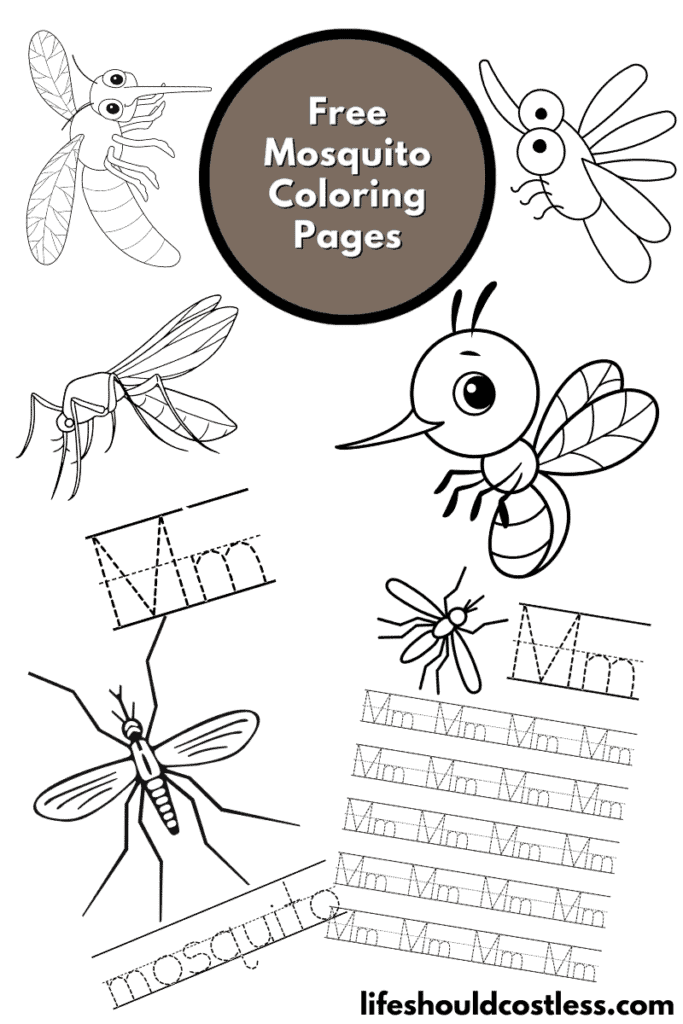
Please feel at liberty to pick the design that resonates with your preferences.
After making your selection, just download the free PDF template, print it out, and immerse yourself in the pleasure of coloring to your heart’s content.
Alternatively, you can utilize these designs as templates for embroidery or draw inspiration from them to craft intricate fine line tattoos.
Mosquito facts
If you’re new to my coloring pages, it’s worth noting that I enjoy providing you with the opportunity to explore the subject matter in-depth, allowing you to seamlessly transform your coloring experience into an educational lesson.
So, let’s embark on that journey together!
Mosquitoes, despite their small size, are fascinating insects with a variety of intriguing facts:
- Diverse Species: There are over 3,500 species of mosquitoes worldwide. Each species has unique characteristics and behaviors.
- Lifespan: The average lifespan of a mosquito is about two weeks, although it can vary based on factors like species and environmental conditions.
- Only Females Bite: Female mosquitoes are the ones that bite humans and animals. They require a blood meal to develop their eggs. Male mosquitoes primarily feed on nectar and do not bite.
- Feeding Mechanism: Mosquitoes have specialized mouthparts called proboscis, which they use to pierce the skin and extract blood. Their saliva contains anticoagulants that prevent the blood from clotting, allowing them to feed more efficiently.
- Disease Vectors: Mosquitoes are known for transmitting diseases such as malaria, dengue fever, Zika virus, and West Nile virus. These diseases collectively affect millions of people every year.
- Malaria Connection: Malaria, one of the deadliest mosquito-borne diseases, has been responsible for more human deaths throughout history than any other disease.
- Hunting Patterns: Mosquitoes are most active during dawn and dusk, although some species are active during the day or at night.
- Attracted to Carbon Dioxide: Mosquitoes are highly attracted to carbon dioxide, which we exhale when we breathe. They can detect it from up to 75 feet away, making it easier for them to locate potential hosts.
- Variety of Hosts: Mosquitoes are opportunistic feeders and can bite a wide range of hosts, including mammals, birds, and even reptiles.
- Flying Masters: Mosquitoes are exceptional flyers. They can fly at speeds of up to 1.5 miles per hour (2.41 kilometers per hour) and are highly agile in the air, enabling them to land on hosts with remarkable precision.
- Ecosystem Role: Mosquitoes play a role in various ecosystems as both pollinators and a food source for other creatures, such as birds and bats.
- Survival in Water: Mosquitoes lay their eggs in water, and the larvae, commonly known as “wigglers,” develop in aquatic environments. They are adapted to survive in a wide range of water bodies, from stagnant puddles to fast-flowing streams.
- Global Distribution: Mosquitoes can be found in nearly every corner of the world, except for extremely cold regions like Antarctica.
- Evolutionary Adaptations: Mosquitoes have evolved over millions of years, making them highly adaptable to changing environments and resistant to many control methods.
- Role in Genetics Research: Mosquitoes have been extensively studied in genetics research, leading to advances in our understanding of genetics and gene-editing technologies.
- Repellents and Traps: Various methods have been developed to repel or trap mosquitoes, including DEET-based repellents, mosquito nets, and mosquito traps that use carbon dioxide and heat to lure and capture them.
These facts illustrate the complex and multifaceted nature of mosquitoes, from their role in ecosystems to their impact on human health and the ongoing efforts to understand and control them.
We definitely learned a lot about mosquitoes, but there’s definitely more knowledge out there to be gained.
If you would like to continue reading on the subject, here are some other reputable resources to learn about mosquitoes:
- https://en.wikipedia.org/wiki/Mosquito
- https://kids.nationalgeographic.com/animals/invertebrates/facts/mosquito
- https://kids.britannica.com/kids/article/mosquito/353494
- https://www.npr.org/sections/health-shots/2016/06/07/480653821/watch-mosquitoes-use-6-needles-to-suck-your-blood
- To see all of my free printables, go here.
- If you would like to see my index of free printable coloring pages, go here!
- To see all of my animal coloring pages, go here.
- To see all of my insect-related coloring pages, go here.
Coloring tips
Coloring a picture of a mosquito can be an enjoyable and creative activity.
Here are some of my best tips and tricks to help you make the most of your mosquito coloring experience:
- Reference Images: Look at real mosquito images or illustrations to get an accurate idea of their coloration and markings. This can help you create a more realistic coloring page.
- Choose a Color Palette: Decide on a color palette before you start coloring. Mosquitoes are typically gray or brown, but you can get creative with colors if you like. Consider using shades of green for the environment or background.
- Start with the Base Color: Begin by coloring the mosquito’s body with the base color. Use light, even strokes to ensure smooth and consistent coloring.
- Add Details: Mosquitoes have distinctive features like striped legs and patterned wings. Pay attention to these details and use fine-tipped coloring tools like colored pencils or fine markers to add them accurately.
- Shading and Blending: To give your coloring more depth and realism, use shading techniques. Start with a lighter shade and gradually darken areas where shadows would naturally fall. Blend colors smoothly to create a three-dimensional effect.
- Texture and Patterns: Mosquitoes have intricate textures on their bodies and wings. Experiment with different coloring techniques like cross-hatching or stippling to mimic these textures.
- Highlighting: Add highlights to make your coloring pop. Use a white or lighter color to add highlights to the mosquito’s body and wings where light would naturally hit.
- Background: Consider adding a background to your coloring page. You could create a realistic outdoor setting or get creative with abstract designs that complement the mosquito’s theme.
- Protect Your Work: If you’re using markers, be cautious of bleed-through. Place a piece of scrap paper beneath your coloring page to prevent ink from transferring to the surface below.
- Take Your Time: Coloring can be a relaxing activity, so don’t rush. Take your time to achieve the desired look, and don’t be afraid to make corrections if needed.
- Experiment: Don’t be afraid to experiment with colors and styles. You can give your mosquito coloring page a whimsical or artistic twist by using unconventional colors or abstract patterns.
- Reference Materials: If you want to be scientifically accurate, you can refer to entomology resources or insect field guides for precise details about mosquito anatomy and coloring.
- Share Your Art: Once you’ve completed your mosquito coloring page, consider sharing it with friends or on social media to showcase your creativity and possibly inspire others to try it too.
Remember that coloring is a personal form of expression, so there’s no right or wrong way to do it.
Have fun, be creative, and enjoy the process of bringing your mosquito coloring page to life!
Options For Printing:
Letter M is for mosquito writing practice worksheets
*My letter M is for mosquito coloring sheet printables have been carefully crafted for classroom usage and are the only printable materials on this page that can be freely employed in public settings without the necessity of obtaining written permission.
Should anyone inquire about their source, kindly share the link to this post.
Your support is greatly appreciated. Thank you!
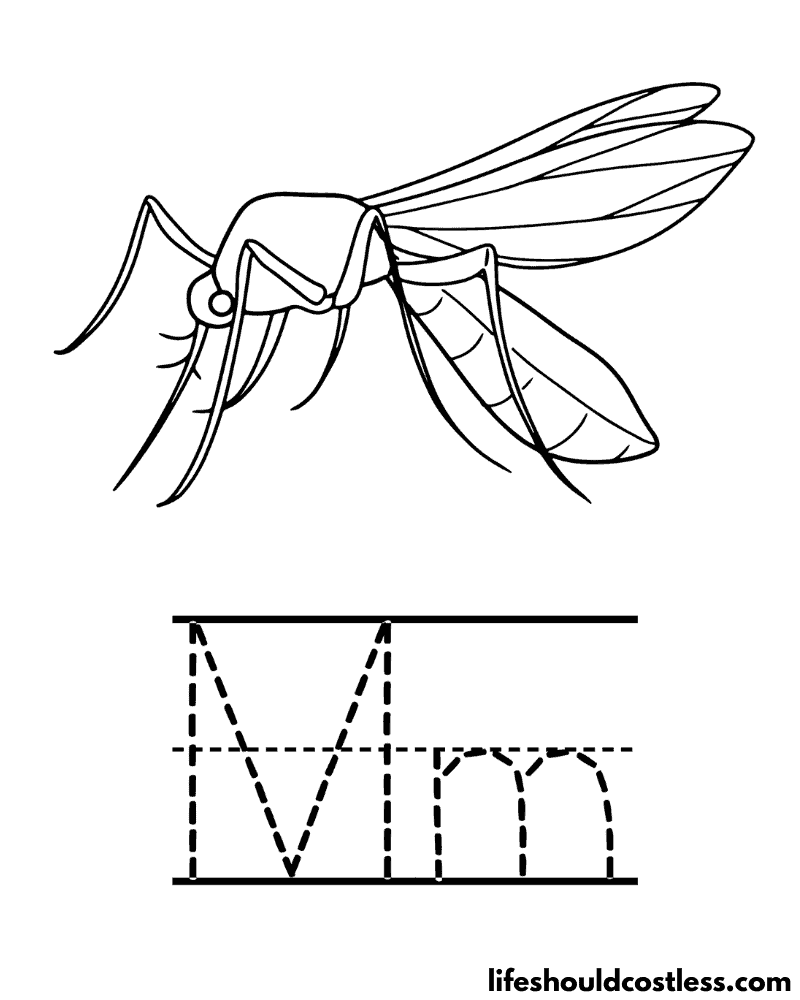
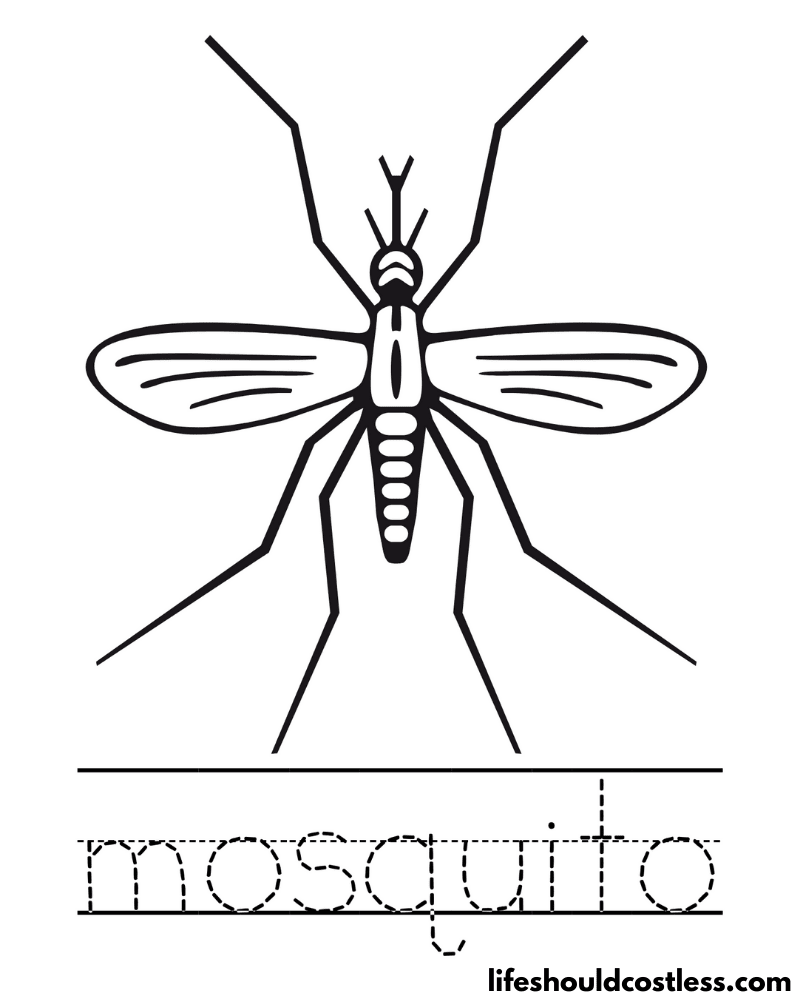
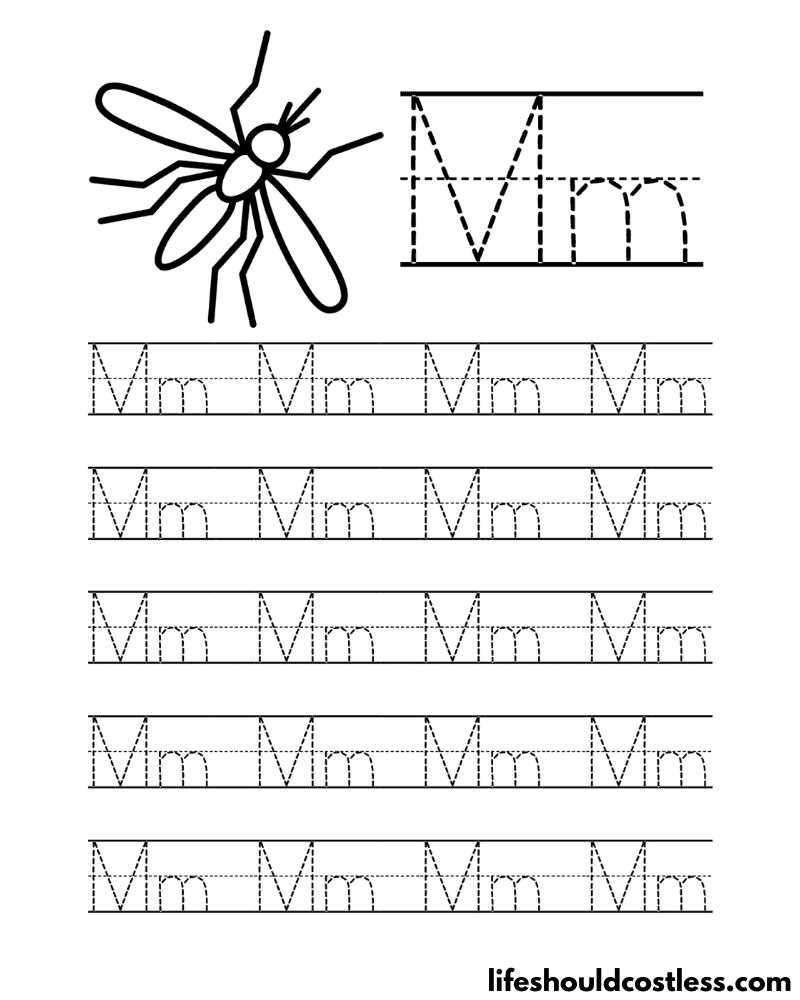
Various mosquito designs

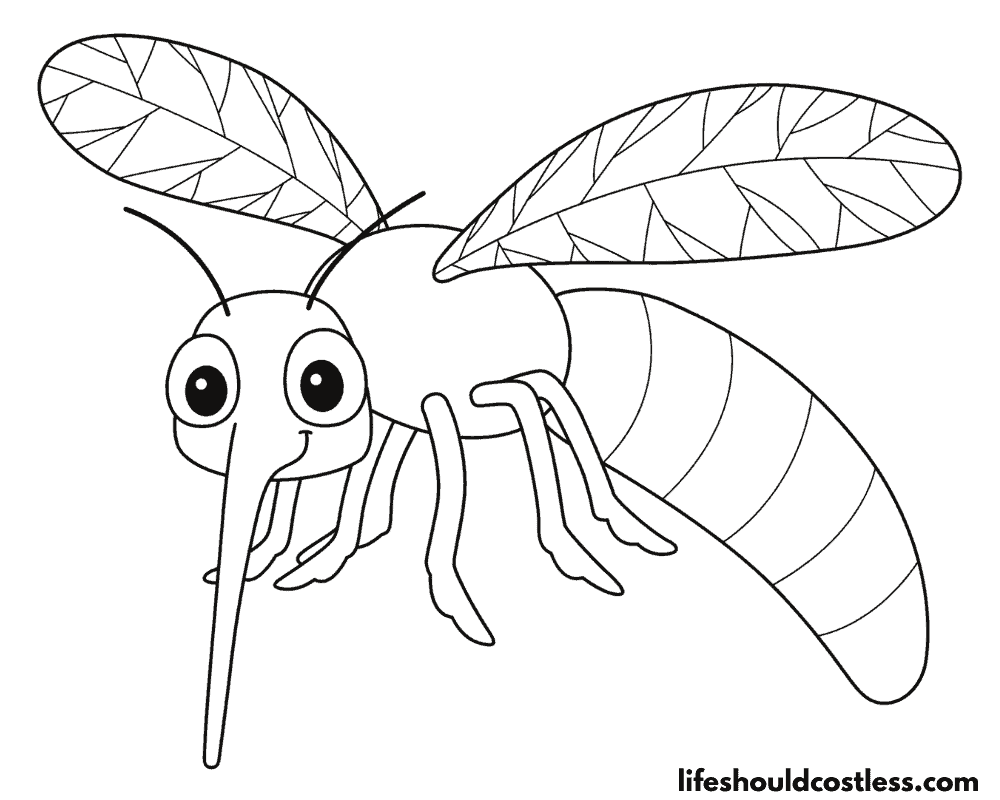
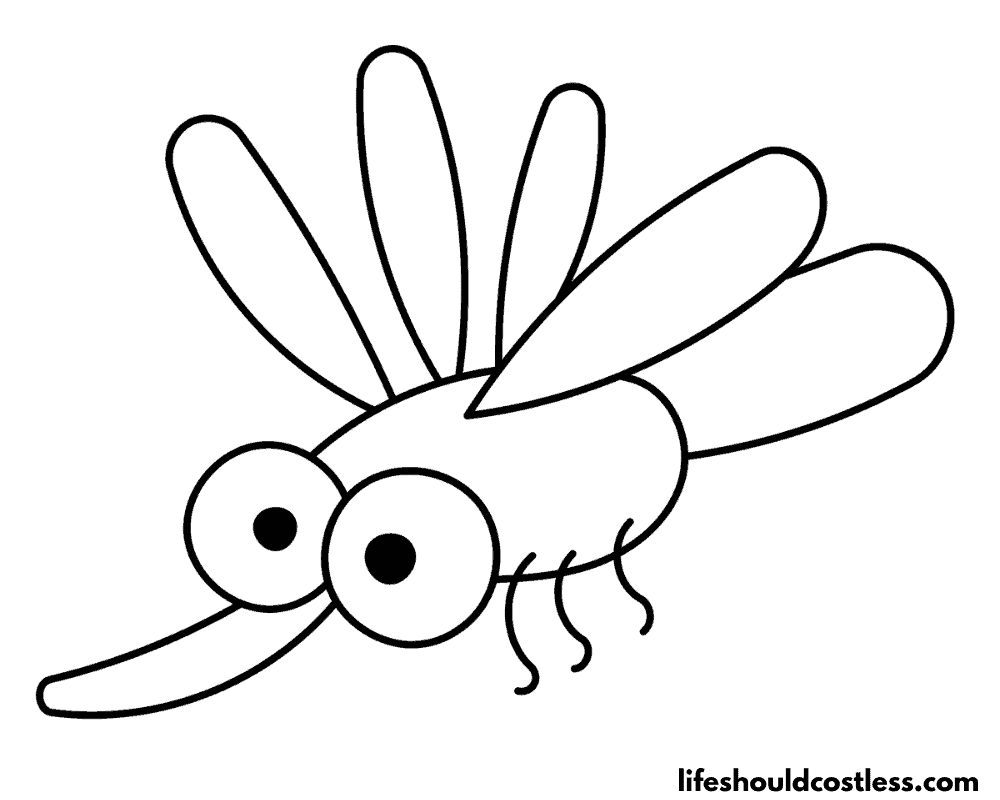
FAQ’s
Mosquitoes typically have a gray or brown coloration. However, their exact color can vary depending on the species and environmental factors.
Some mosquitoes may appear almost black or even have a slightly metallic sheen. The coloration of mosquitoes helps them blend into their natural habitats, such as forests or wetlands, where they often reside.
The red coloration you may observe on a mosquito is often due to the presence of blood in its abdomen. Only female mosquitoes feed on blood, which is necessary for them to develop and lay their eggs.
When a female mosquito pierces the skin of its host and extracts blood, it fills its abdomen with the blood it has taken.
The mosquito’s abdomen is a thin, flexible structure that can expand to accommodate the blood meal. This expansion may make the abdomen appear red or reddish-brown, especially if the mosquito has recently fed.
As time passes and the mosquito digests the blood, the red coloration gradually fades, and its abdomen returns to a more normal, translucent appearance.
*I will add more mosquito colour / color questions and answers as the questions get sent to me.
Conclusion
In conclusion, our mosquito coloring pages offer a unique blend of creativity and education, providing a captivating window into the world of these tiny but intriguing insects.
Through the strokes of your colored pencils or markers, you can not only unleash your artistic expression but also deepen your understanding of mosquitoes, their distinctive features, and their role in the ecosystem.
Whether you’re a child discovering the wonders of the natural world or an adult seeking a relaxing and informative pastime, mosquito coloring sheets invite you to explore, learn, and create.
So, grab your favorite colors, embrace the buzz, and let your imagination take flight as you bring these remarkable creatures to life on the pages of your coloring book.
Happy coloring!
Thanks so much for stopping by my blog and supporting my endeavors to make people’s lives a little easier/better/more affordable.
If you liked this post, or found it helpful in any way, please make sure to share it with your family, friends, and co-workers via social media….
Or you could even send them the direct link via email. Whichever way you choose to spread the love, I super appreciate it! ~Sarah
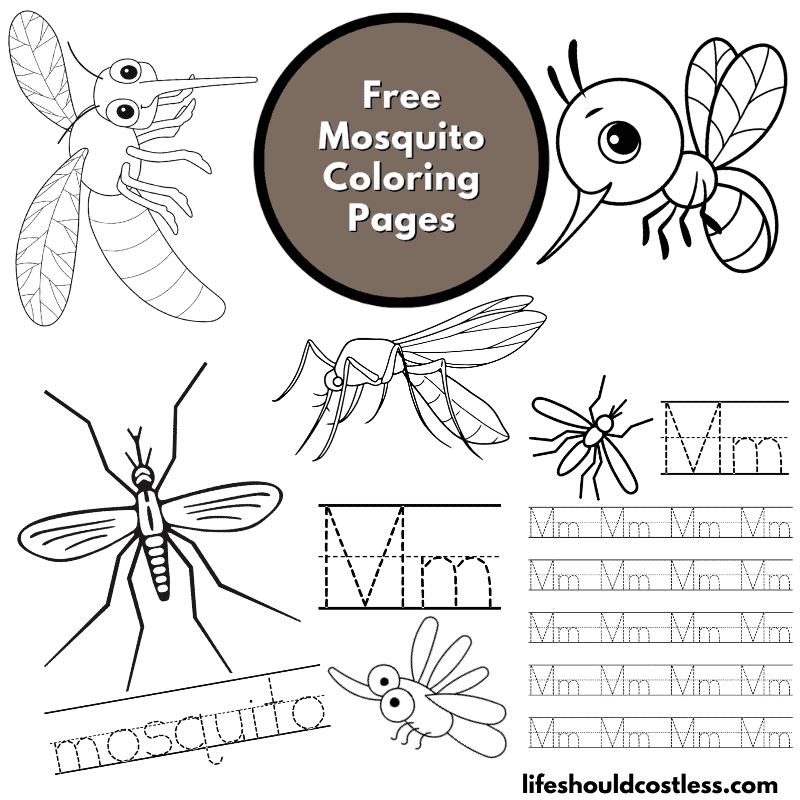
How To Follow & Support This Site
- If you would like to subscribe to my email list, go here.
- Make sure to follow along via social media, by going here.
- If you would like to learn how to really show your support to this site (at no cost to you), go here.
- If you would like to make a direct donation to the site, go here.
Check out my other free printables
- To see all of my free printables, go here.
- If you would like to see my index of free printable coloring pages, go here!
- To see all of my animal coloring pages, go here.
- To see all of my insect-related coloring pages, go here.
Otherwise, here are direct links to several of my other related posts that you’re also going to love:
Animals / Insects
Animals / Birds
Animals / Mammals
Other good resources for a printable mosquito
- https://clipart-library.com/mosquito-coloring-page.html
- https://www.just-coloring-pages.com/product-category/animal-coloring-pages/mosquito-coloring-pages/
- https://www.funnycoloringpages.com/coloring-page/mosquito/
*This post was originally shared to this blog on 10/16/2023, and has since been updated to improve user experience, add video instruction, as well as to make it as shareable as possible across the social medias.
**Please note that I do try my hardest to provide factual, but easy to understand, information about each topic. If you notice a discrepancy in my coloring pages, facts, or see something that you deem “misinformation/incorrect” please make sure to notify me about it. I would prefer that you send me an email with a link to a more reputable resource on that subject, so that I can correct it as soon as possible. Thanks so much for helping this site become the best that it can be!
***Resources from djinkers were used in the production of this article.
***Resources from djinkers were used in the production of this article.
